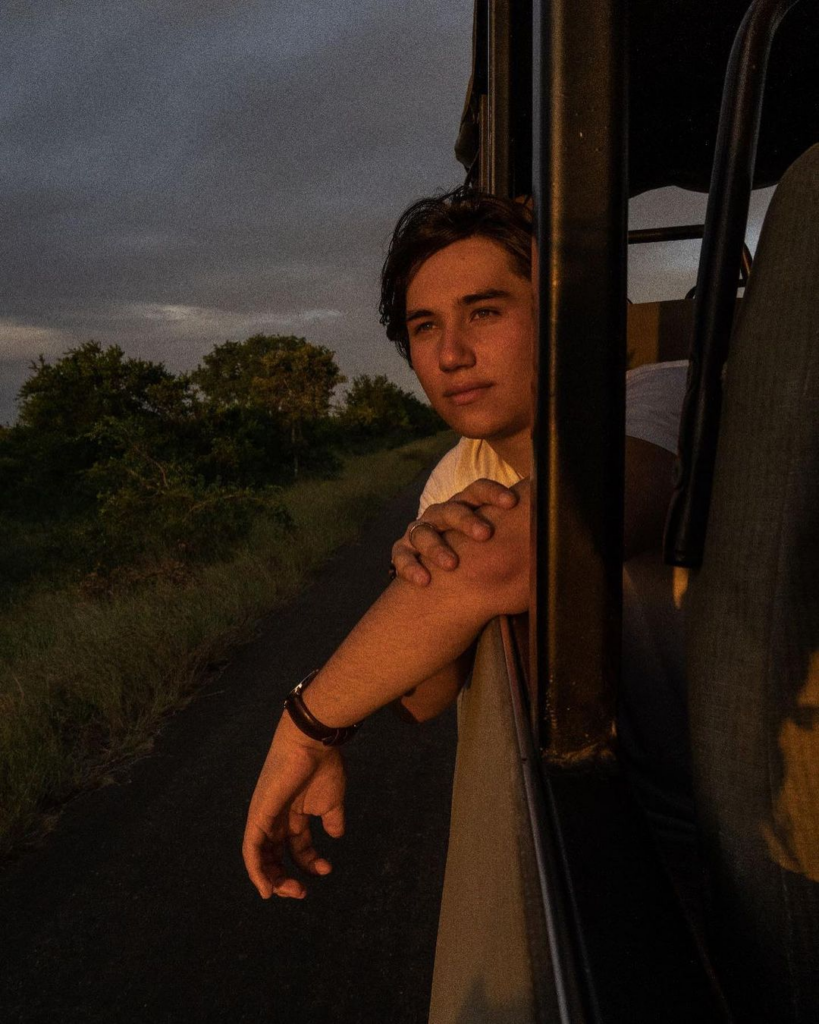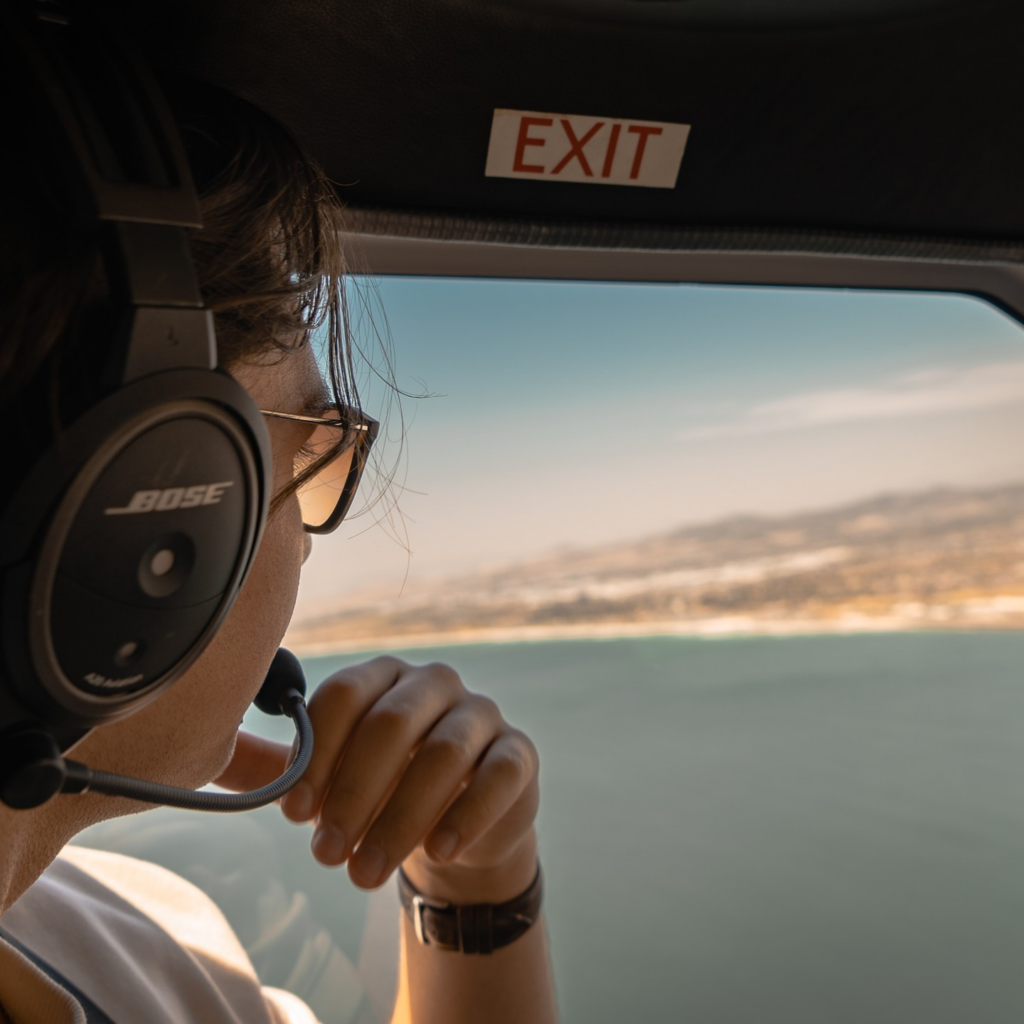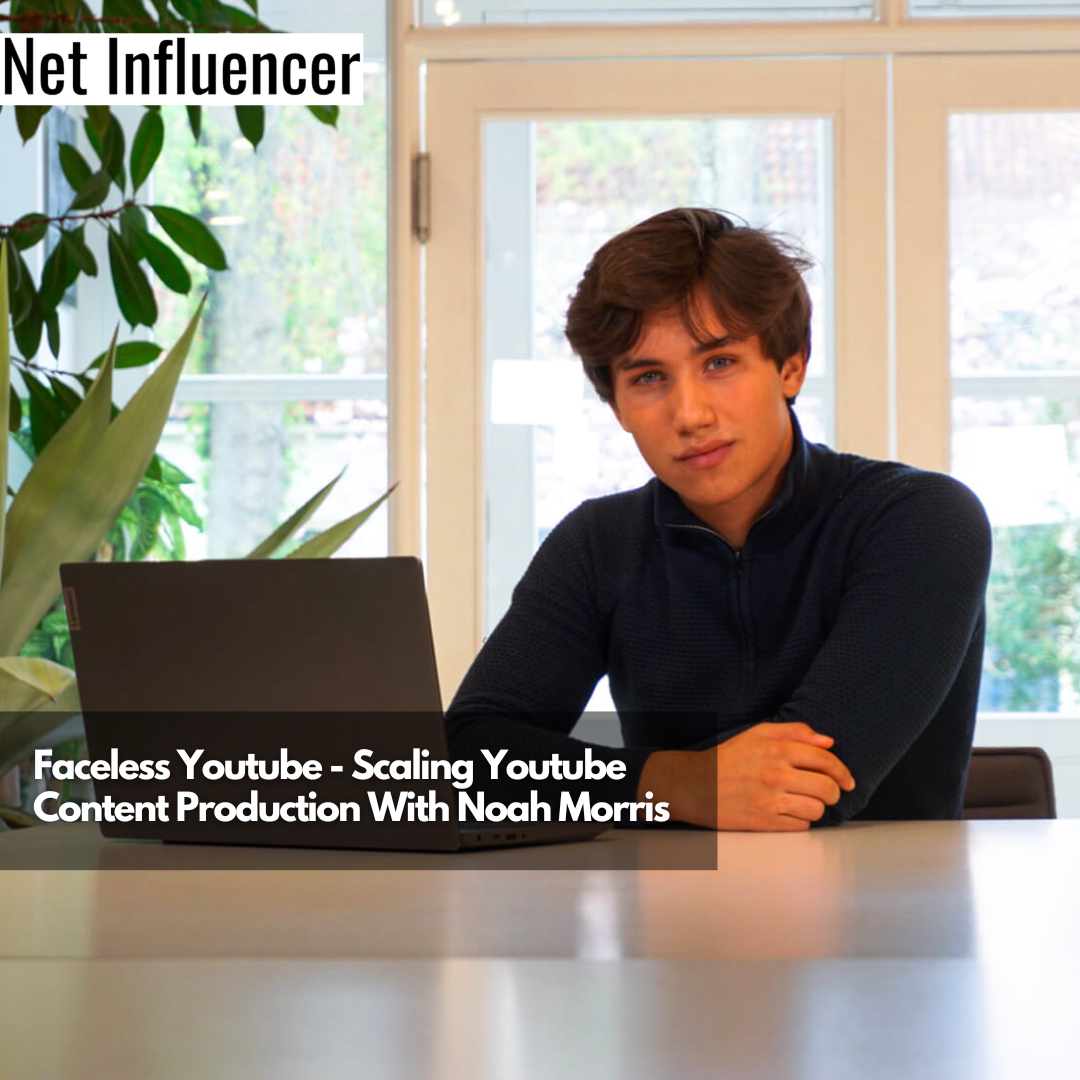Influencer
Faceless Youtube – Scaling Youtube Content Production With Noah Morris
Noah Morris gained a lot of experience on YouTube before he decided to start his own business and help brands — from using the platform as a gamer to learning how to edit YouTube videos on his own. Today, countless brands trust him to improve and grow their YouTube channels.
Noah Morris gained a lot of experience on YouTube before he decided to start his own business and help brands — from using the platform as a gamer to learning how to edit YouTube videos on his own. Today, countless brands trust him to improve and grow their YouTube channels.
Who is Noah Morris?
Noah Morris considers himself a YouTube nerd and currently runs 20 faceless channels with 2.5 million subscribers. He and his team help brands produce effective YouTube thumbnails and provide access to game-breaking YouTube tools. As a result, brands can take their YouTube channels to the next level fast!
What inspired you to start a YouTube consultancy specifically for coaches and brands?
Noah Morris has been running YouTube channels since 2016. Back then, he was running a gaming YouTube channel, and after his channel grew significantly, he started getting approached by brands asking him if he could work for them as a video editor or script writer.
Working with brands served as a platform for Noah to learn about the business side of YouTube, as well as grasp a higher level of understanding in terms of editing and script writing. He recalls, “This is essentially where I learned all my fundamentals, which is very important.”
Unlike most YouTube consultants and strategists who look at YouTube but never actually made YouTube videos themselves, Noah Morris prides himself on having edited and written hundreds of YouTube videos. This allowed him to understand the business model, including what the experts were doing and where they would outsource work to other creators. After he learned all of these things, he started outsourcing the work he was getting to other freelancers.
Because of this strategy, Noah earned a profit margin and used that to reinvest into making his own YouTube channels. From there, he started growing his own YouTube automation channels, worked with people prominent in the automation space, and created courses.
He tried doing consulting and coaching before but chose to run YouTube channels by himself because it’s more profitable. He adds, “In the end, I just became a consultant for my own channel. So now I run about 20 [channels].”
What’s your approach to helping brands to gain momentum on YouTube?
According to Noah Morris, one of the biggest misconceptions brands have about YouTube is that customers care about what they have to say. But because there’s so much distraction on YouTube, customers couldn’t care less. Instead, brands have first to understand what triggers their customers, what they’re currently interested in, and how brands can relate to these interests.
Traditionally, brands build connections directly with customers by spending years making videos that highlight the brand and what they’re doing behind the scene. This strategy is often enough, but most of the time, it gets boring and requires a lot of time to build traction or any hype before brands can see results.
Noah’s approach doesn’t immediately relate to the products brands are trying to sell; he makes sure that brands relate to their customers’ interests first. He explains, “For example, like day traders, they would be interested in stuff like self-improvement cause often, making money online and self-improvement are very closely related to each other.”
“We’ll start doing something called trendjacking, which is like looking at the self-improvement space and determining what are people talking about right now and how can I connect my brand?”

This strategy increases a brand’s chance to do well on YouTube because it allows them to have a base audience and then pull a fewer pool from that audience. Brands can build that viewer pool over time from scratch, but it takes years. The better and faster alternative is to pull that pool from an existing, smaller pool.
What are the common reasons why brands’ or coaches’ YouTube channels aren’t successful?
“I would say that the most common reason is that they just make really boring YouTube videos,” Noah says. To get better results, Noah suggests brands should understand what grabs their audience’s attention and find a way to make viewers give YouTube the most amount of dissatisfaction or satisfaction signals.
The most important signal would be where viewers click off, and the second — which brands and coaches often ignore — is the comment section. This section tells a lot, especially when starting a new channel. Noah shares that the comment section is the first thing he’ll look into as it helps him identify what people are talking about and what part of the video make them engage.
In short, if brands aren’t going virally on YouTube, it’s not the algorithm working against them. Most of the time, they usually do two things wrong: either they’re targeting a niche that’s too small and will never grow, or they continually make videos that no one likes watching.
What are the most important elements for success on YouTube?
For Noah Morris, two of the most important elements would be higher satisfaction signals and getting the audience’s attention. Instead of doing it the other way around, where brands expect their audience to like them because of prestige or other different reasons, brands should strive to capture their audience’s attention and then leverage something that their audience will find interesting.
How do you develop content concepts for YouTube with your clients? How do you collaborate with clients to develop content?
Noah Morris develops content for clients based on his client’s lifestyles. He believes the partnership wouldn’t work if his content creation process doesn’t fit into his client’s lifestyle.
Noah shares an example by telling us about his experience with a previous client. He says, “One of my clients was always traveling. So, I have to leverage that in some certain way because he’s always doing stuff. What we did is we did like a flock format where we gave business lessons while showing off his lifestyle.”

When it comes to coming up with concepts, Noah also makes sure that he studies what the “small guys” are doing because, most of the time, what they do blows up very quickly. Established channels, like Mr. Beast, have been successful for years, but because the ecosystem is very different today, implementing the same strategies as these big channels don’t always work.
Noah Morris chooses to study brands that have been doing really well for the last three months and has the same size as the client he’s working with. Taking this route is tricky, but usually, studying what the smaller guys are doing increases a brand’s chances of success.
Since you’re not doing consulting anymore, what kind of products or programs are you currently offering?
Starting May 1, Noah will offer a YouTube course that teaches the fundamentals of YouTube automation. He shares, “YouTube automation is like outsourcing all your YouTube work. That’s something I wanted to try even when I was still doing the consulting.”
Unlike other YouTube automation courses today, Noah’s is relatively cheaper — costing only $200. Most of the courses offered by his competition range anywhere from $2000 to $3000. And the reason why Noah Morris priced his course cheap is simple. He says, “I want as many people to get started, and I can surface the backend of that whole ecosystem.”
Noah is also invested in SaaS products. He believes that the best business model to get into nowadays would be SaaS YouTube automation and courses — and that’s what he’s doing.
What Noah’s SaaS product does is find smaller YouTube channels by filling out very specific YouTube metrics. This way, users can find very specific, smaller channels on YouTube that they want to study.
In the future, Noah will also integrate ChatGPT, allowing users to type in prompts, which automates many time-consuming tasks. For instance, users can type, “Hey, can you find 20 YouTube videos that are related to trading?” Prompts will look at different databases and fetch videos or channels for the users.
How do you monitor and provide guidance and support to your clients’ YouTube channels?
For Noah Morris, the most important part of the process is making sure that they receive a lot of feedback. By having feedback points, Noah can easily determine what to improve and if there are unnecessary parts.
Maximizing feedback helped Noah build a very strong connection with his potential clients, as well as built an expert status on YouTube. As a result, more and more people trust him to improve their YouTube channels.
How do you conduct competitor analysis to help clients stand out on YouTube?
Regarding competitor analysis, Noah does one of two things: improve the quality drastically and innovate the current format. The first one is easy, as Noah has been competing with other brands whose main focus isn’t YouTube. The second approach requires more work as many brands tend to make and use very boring search-based content.
Noah Morris explains, “So think about 10 Tips to Get Better Conversion on Your Website. A lot of time, that’s how titles are structured. Again, you can repackage that in a more engaging way. So something which you could still do the search-based thing and nurture the audience but make it more exciting is by doing something like, ‘How This Website Made 10 Million by Changing This Button.’ It’s more interesting like that.”





















